Juniper is often used as an element of landscape design. This culture is characterized by an attractive appearance, which is preserved for all seasons. Among other things, the plant has therapeutic properties and can be applied in the recipes of traditional medicine.
Juniper: culture description
The genus of juniper is represented by more than 70 species, the agricultural area of \u200b\u200bwhich is very wide. Juniper trees and shrubs can be found both in tropical areas and in the polar zone. The lowest cultures most often choose for the life of the mountain and cliffs, tall trees prefer forests, mainly in Central Asia, America and the Mediterranean.
Juniper refers to the family of cypress, which is noticeable in its appearance. On our planet, this plant has already been about 50 million years, and the life expectancy of individual specimens is from 600 to 3,000 thousand years.
Culture is famous for its bactericidal properties, and its essential oils helps to effectively deal with the diseases of the respiratory system.
Types of juniper
There are a lot of varieties and species from juniper. Let's consider the most popular varieties of this plant:
- Juniper Chinese grows mainly on stony and dry soils. This shrub is distinguished by a bluish-nasy color, unpretentious in leaving, in landscape design is often used to create mountaineering and rocaries. The most popular varieties are considered: Gold Coast, Plumosa, Old Gold and Blue Alps.
- Juniper ordinary is considered to be the most common type of culture. It is represented by the most varied varieties, among which you can find both tall trees and rabid shrubs. Its main advantages can be considered unpretentious, drought resistance, inconspicuous. Such a plant can carry almost any conditions. From popular varieties you can allocate a tall juniper Hibernica, a more shorter compressa variety, as well as a fluttering shrub Green Carpet.
- Another kind of culture is the juniper Cossack, which is a low-spirited plant. Care, as a rule, require only young representatives of this shrub. Care lies in abundant irrigation and soil loosening, as well as periodic feeding with complex fertilizers.
- Juniper scaly - a plant, which perfectly transfers any climatic conditions. It grows perfectly in the heat and in the cold, unpretentious to the soil, and only young specimens of this culture need it in feeding fertilizers. Its feature is a sensitivity to the sunshine, which is particularly manifested in spring. At this time, the bushes are recommended to cover from the sun.
Rules landing juniper
Choice of time and place, soil preparation
Juniper into open soil is made to plant in the first weeks of spring, and it is not necessary to wait at all when warm weather is finally installed. As soon as the snow begins to melt, the plant can be planted in the open soil. Sometimes the culture is planted and in a later, warm time, but then the young needle can suffer from sunlight.
It is not recommended to dig seedlings in the fall, because the bush may not have time to take root in the ground until winter. If you bought an instance with a closed root system, then such a tree can be planted when you like, the main thing is to provide a good care and in the daytime it is to hide it from the straight sun.
Juniper loves open places where enough rays fall throughout the day. In most cases, the illumination of the place where the culture grows, directly affects its decorative qualities, pomp and dense crown.
The soil for growing juniper should be prepared based on what kind of grade you are going to plant. For example, an ordinary juniper prefers an alkaline composition soil, the same land is suitable for Cossack and Central Asian species. If the soil is sour, it needs to be mixed with haired lime or dolomite flour. Almost all other types of juniper love just acidic soils that can be created by making peat, wood chips and sand.
Siberian juniper prefers easy sandy or soup soil, Virginsky is more suitable for the clay soil with the addition of compost. No matter what kind of culture you are not planted, do not forget to provide her good drainage. It can be made of pebbles, pebbles, broken bricks, sand. The layer thickness should be 20-25 cm.
Selecting planting material
The optimal option for planting to open soil is plants purchased in containers with a capacity of up to 5 liters. Such copies easier to replant, besides, they are faster at a new place. It is desirable that the roots of the bush were closed, that is, located inside the earth coma.
Instead of young seedlings, it is possible to use more passage plants, which before selling digging out of the soil along with a coma and wrapping with a burlap or film. Adult juniper copies are better not to replant at all, as they have a very powerful and long rod root, to dig away without damage it is almost impossible. Juniper poorly makes transplants, and the injury to its root system often leads to the death of a tree. Before planting an earth, comes must be made for 2 hours.
How to plant juniper: sequence of actions
- First, the selected section is digging in the ground, the dimensions of which must correspond to the size of the seedling. For young copies, it is customary to dig a pit 1x1 m and a depth of 50 cm. The size of the recess must be about 2-3 times more than the earthen com with the roots of juniper.
- At the bottom of the pit arrange a drainage layer of sand, pebbles or bricks. The height of such a pillow should be 20-25 cm.
- The remaining space is falling asleep in garden earth, the composition of which is selected depending on the specific variety of culture.
- The root of the plant is placed in the pit and gently spread, trying not to injure him. The root neck is installed at the level of the surface of the soil, if it comes to a young saplings. The cervical bushes should rise at 7-12 cm above the Earth.
- Popping the roots and tampering the soil, the plant is well watered with plenty of water.
- The space around the trunk is sprinkled with mulch, for which peat, sawdust, pieces of pine crust, bumps, etc. are used. The mulch is poured with a layer with a thickness of up to 10 cm.
The distance between small bushes of juniper should be about 50 cm, between high trees, intervals from 1.5 to 2 m should be observed.
Care for juniper
Most varieties of juniper drought-resistant and for a long time can do without water, but in a very hot and dry summer, the plant still needs watering, which should be carried out at least 1 time per month. Juniper bushes are well referred to the periodic irrigation from the spray gun that you need to exercise once a week in the early morning hour.
In the spring culture is fed by nitroammophos. On 1 m² of area contribute 45 g of substance. Throughout the summer, the plant can also be picked up with mineral or organic compositions, but it is not recommended to do it more often than 1 time per month.
Juniper is poorly transferring transplants, so it is possible to resort to such a procedure only in case of extreme need. Adult plants are very rarely coming up in a new place and often die. If you still decided to transplant the village, select the most favorable plot for it and prepare the soil, mixing the sand, peat and coniferous ground. After transplanting, do not forget to abundantly pour the plant with plenty of water.
Juniper refers to those cultures that do not need trimming. However, the old juniper should be periodically updated, removing dry branches, broken and sick shoots. With the help of trimmed, the bush can be given a beautiful form, but it is impossible to cut too many branches at once, otherwise the plant will get sick.
Young seedlings for the winter are hidden, so that they are not injured from frost. Adult bushes and trees are not hiding under the film, but they tied up with the branches, so that they do not break under the weight of snow.
In the spring, most types of juniper suffers from the aggressive sun. This period is considered the most dangerous time for such a culture, since the spring sun rays literally burn the crown of plants. Sometimes it is fraught with not only loss of decorativeness, but also the death of individual instances. But even if the juniper does not perish, his needles can become yellow or brown-brown. In February-March, the bushes are made to hide under the burlap or any other opaque material. When the snow comes down, the shelter is cleaned, the soil around the trunk is cleaned from garbage and old mulch, loose, slightly dried and mulched again.
Methods of breeding juniper
Cultivation of culture from seeds
Almost all hybrid and decorative varieties will be multiplied with exclusively with stalling, but some types of juniper can be searched by a seed way. Sowing material is collected from bushes whose age exceeds 2 years. The optimal collection time is considered when the berries began to darken, but did not change the color completely. When this happens, the seeds go into a hibernation and germinate for a very long time.
The collected grains are stratified. They are placed in a box filled with a mixture of wet peat, sand and moss. This container is endured to the street in the autumn and leave for the entire cold period of the year. Such a procedure ordered seeds and contributes to their speedy germination. Approximately in May the grains are removed from the substrate and transplanted on a permanent place of growth in open ground.
The reproduction of juniper cuttings
The drawing is considered a simpler and effective way to reproduce this culture. For its exercise, the spring is chosen by a suitable plant and a young one-year escape is cut off from him with a fragment of a maternal bush. The length of the cutting should be about 10 cm. This escape is released from the needles and is placed in a substance that stimulates the root formation. Then the cuttings are immersed in a mixture of sand and peat, watered, covered with a film and put in a half. From time to time, the film is removed, so that the plant can be saturated with oxygen. Behind the humidity of the soil is constantly monitored without giving her to dry. After about 1-2 months, the cuttings will release roots, after which it can be transferred to a constantly place of growth.
Diseases and pests of juniper
- Such a disease, like rust, manifests itself in changing the color of the needles, which becomes orange-drier. The reason may consist in the fact that many salts are collected in the soil.
- The yellowing and drying of the needle testifies to the rebupping of moisture. Such a phenomenon can be observed in too rainy summer or with increasing the level of groundwater.
- Rust mushrooms are a disease that has a kind of reddish outlook on the trunk and shoots of juniper. Such branches must be cut off and disposed.
- Fungal lesions lead to the appearance of ulcers, warts, growths on juniper. To avoid this, the plant needs to be treated with copper drugs.
- Juniper trees, especially young specimens, often strikes the fault. Special preparations will help to get rid of it: "Fufanon", "Decis", "Aktellik" and others.
- If you have noticed small rounded brown cones on your plants - these are the shields. A small number of these parasites can be removed manually if there are many of them, it is better to use insecticides.
Juniper, photo:

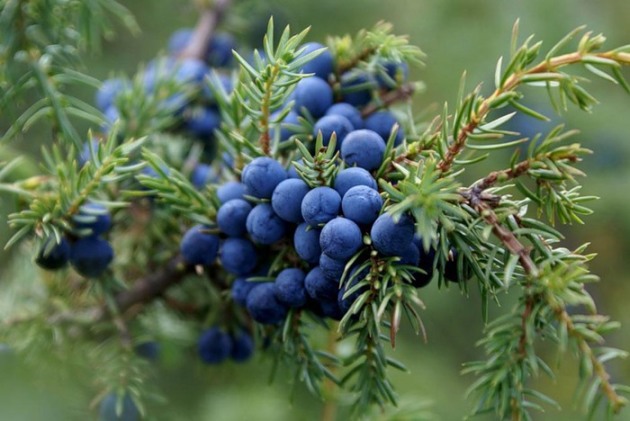
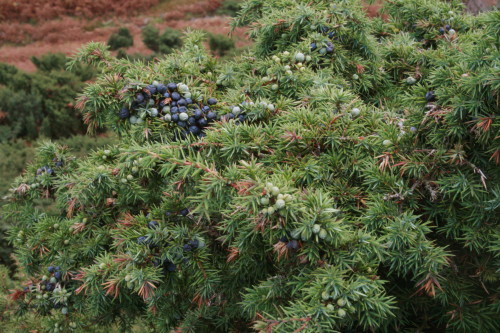
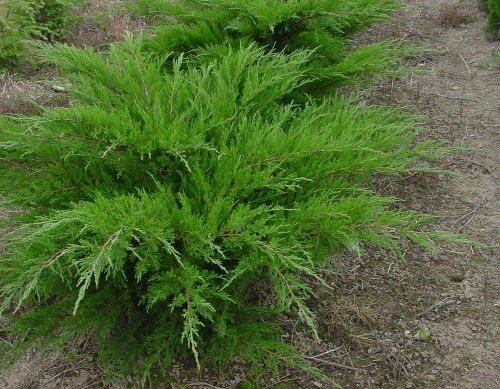
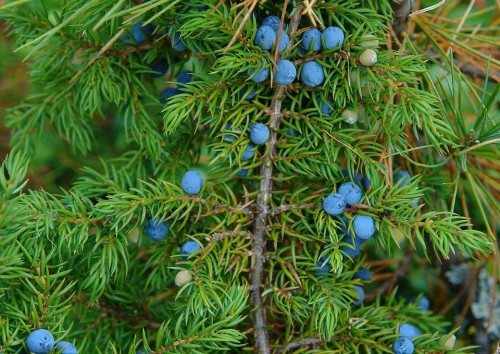
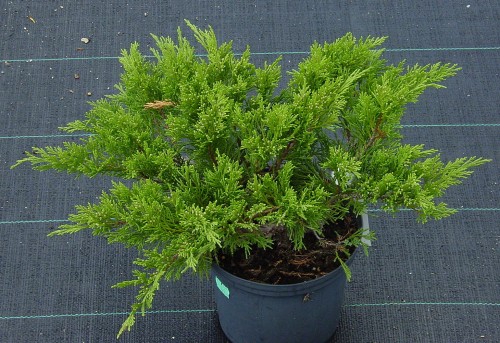
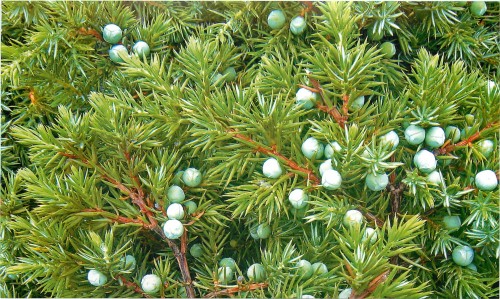
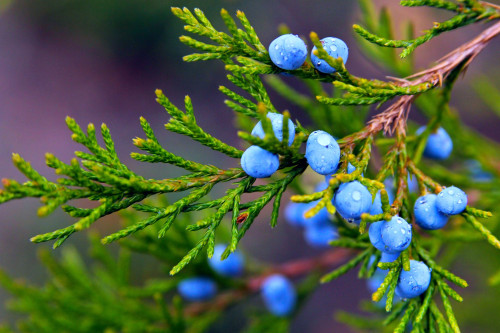
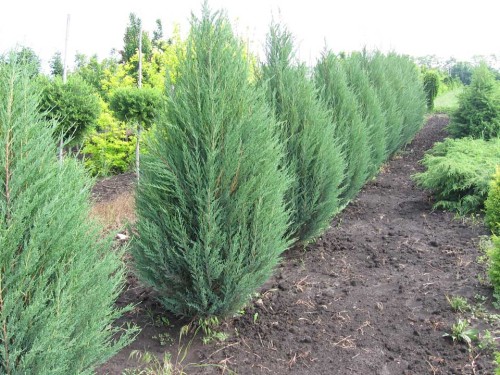
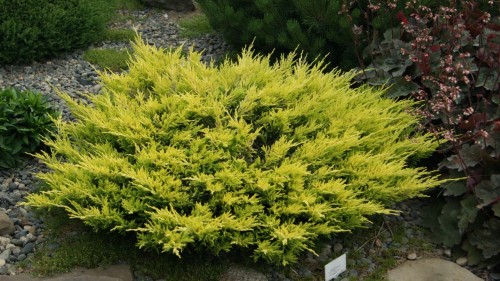
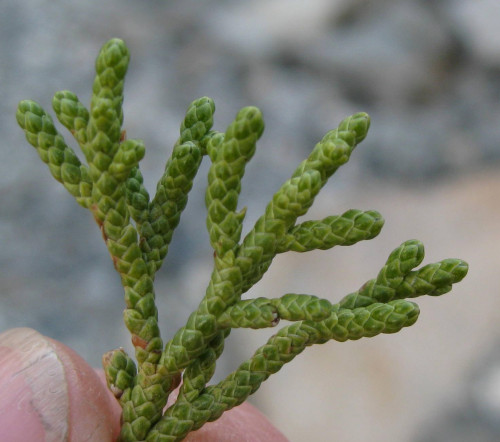
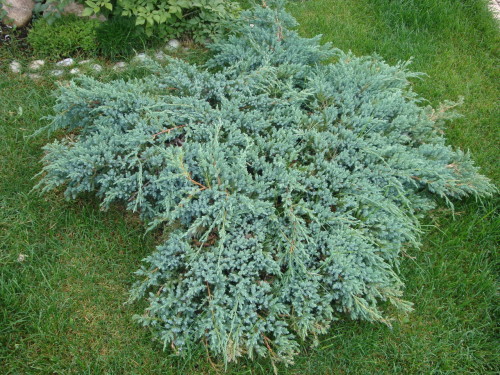

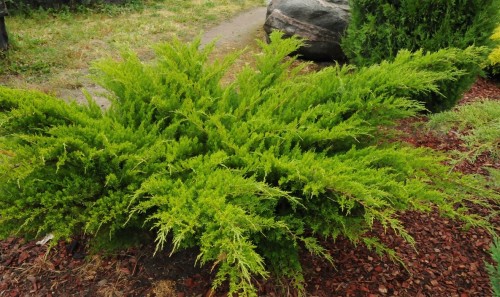
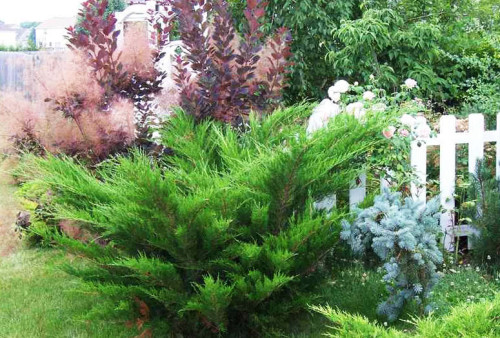












 Start a discussion ...
Start a discussion ...